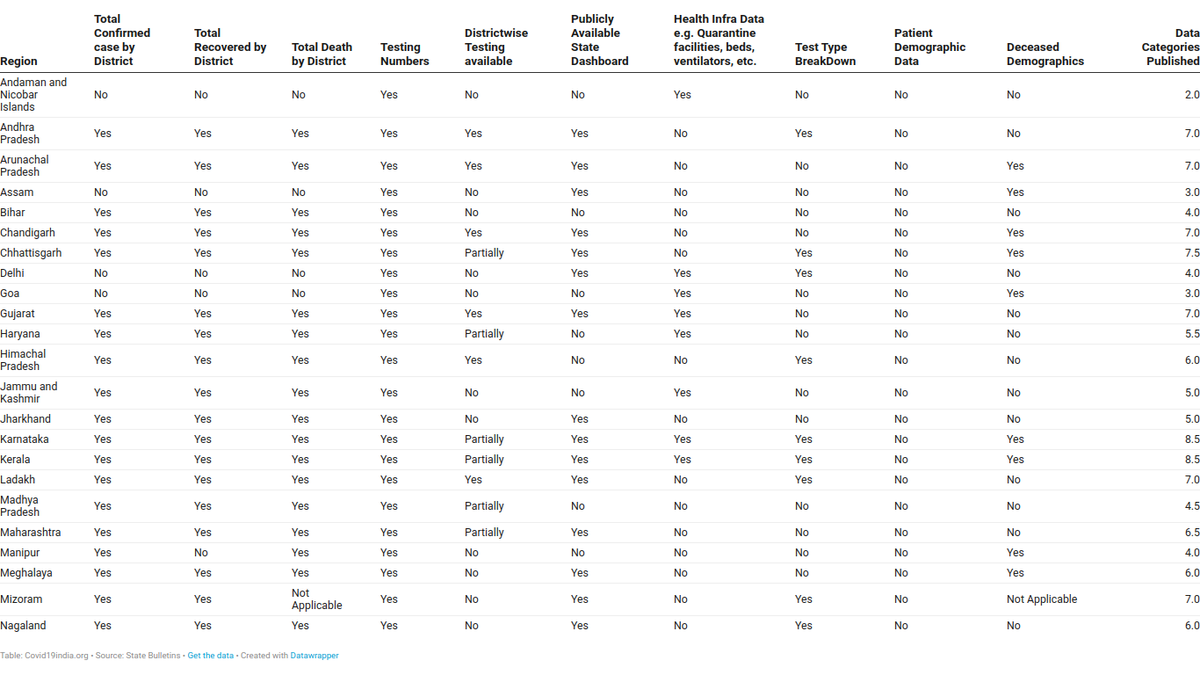
We've shared Covid19 stories of our volunteers earlier.
In this thread, we take you through the Covid experience of a senior citizen - the mother of one of our volunteers in Hyderabad.
✅An insightful read into the ups and downs of the recovery and post recovery journey.
1/16
In this thread, we take you through the Covid experience of a senior citizen - the mother of one of our volunteers in Hyderabad.
✅An insightful read into the ups and downs of the recovery and post recovery journey.
1/16
1. Why did she decide to get tested? She had a fever for 2 days. Considering that she visited a hospital setting in the prior week, prompted us to eliminate any risks and get tested immediately.
2. What test was taken?
A RT PCR test and the result came in 36 hrs.
2/16
2. What test was taken?
A RT PCR test and the result came in 36 hrs.
2/16
3. What happened after the test results came? We immediately room quarantined her and contacted the GHMC helpline to know the next steps. They gave contacts of govt. doctors for consultation and also sent a Covid19 kit that was delivered the next day.
3/16
3/16
4. What was the doctor's initial recommendations?
We consulted their regular physician, who recommended that she be home treated with a 14 day Covid19 home care package. Even though she was diabetic, the doctor recommended home treatment considering her mild symptoms and...
4/16
We consulted their regular physician, who recommended that she be home treated with a 14 day Covid19 home care package. Even though she was diabetic, the doctor recommended home treatment considering her mild symptoms and...
4/16
....with the recommendation of hospitalisation if the symptoms worsened.
5. What was included in the 14 day home care package? Daily video consultation with doctor, daily monitoring of vitals by a nurse, sessions with nutritionist and physiotherapist.
5/16
5. What was included in the 14 day home care package? Daily video consultation with doctor, daily monitoring of vitals by a nurse, sessions with nutritionist and physiotherapist.
5/16
6. Was this package helpful? Absolutely. Consultation and guidance of a doctor was required at multiple times during the recovery journey as the symptoms oscillated during the period. Do not self medicate at home, especially in case of senior citizens.
6/16
6/16
7. How did you prepare for room quarantine? This is an important part which many might take lightly thinking that one can simply quarantine in the room and take medicines. In reality, more preparation is required and it's good to be aware and prepared.
7/16
7/16
For room quarantine we needed: Oximeter, Thermometer, Blood sugar and BP measurement devices as she had those conditions, electric kettle, electric vaporizer, surface disinfectant, N95 masks, separate waste bin etc. It's good to be aware of this to avoid last minute rush.
8/16
8/16
8. How did her symptoms progress over time? The first 5 - 6 days showed only mild fever. But, symptoms started to intensify on days 7 - 9. Increased fever, mild to moderate breathlessness, increased fatigue etc. were displayed. This swing in symptoms was concerning.
9/16
9/16
This is where the constant guidance from doctor, even though it was telephonic/virtual helped. He suggested timely interventions that helped the increased symptoms to subside. At this time, we had also looked for hospital beds in case the need came up.
10/16
10/16
9. Was there any special diet recommended? Nothing special as such, but easy to eat home cooked food, rich in proteins is what we gave her. Timely food was important given the number of medicines she was consuming. Ensure healthy diet during the recovery period.
11/16
11/16
10. Was there any exit test done? No. Overall 14 days of treatment with the last 3 days without symptoms is what the doctor recommended. This was to be followed by a further 7 days of room isolation with reduced medicines. This is in line with MoHFW guidelines.
12/16
12/16
11. How is she feeling post recovery? The post recovery period has been surprisingly challenging.
1. Continuing fatigue + Reduced appetite
2. Tends to constantly check vitals and get alarmed whether she is truly Covid free at slight variations
3. Mild fever at times
13/16
1. Continuing fatigue + Reduced appetite
2. Tends to constantly check vitals and get alarmed whether she is truly Covid free at slight variations
3. Mild fever at times
13/16
12. What are the key learnings from the experience?
a. Different journeys: My mother was above 60 with diabetes and BP, yet she was able to recover at home with timely care. Don't panic if you are a senior citizen, get tested early and avail proper medical help.
14/16
a. Different journeys: My mother was above 60 with diabetes and BP, yet she was able to recover at home with timely care. Don't panic if you are a senior citizen, get tested early and avail proper medical help.
14/16
b. Test Early: We believe that her symptoms remained moderate as we got the test results within 2 days of onset of symptoms. Delayed detection could have potentially lead to aggravated symptoms.
c. Get medical help: Don't self medicate, guidance of a doctor is critical.
15/16
c. Get medical help: Don't self medicate, guidance of a doctor is critical.
15/16
d. Ups and downs: The onset of symptoms can be gradual. The most severe symptoms were exhibited between 7th to 9th day. Again having a doctor to guide through this phase is critical.
e. Post recovery: There will be some lingering issues for a while, do not panic.
16/16
e. Post recovery: There will be some lingering issues for a while, do not panic.
16/16
• • •
Missing some Tweet in this thread? You can try to
force a refresh









